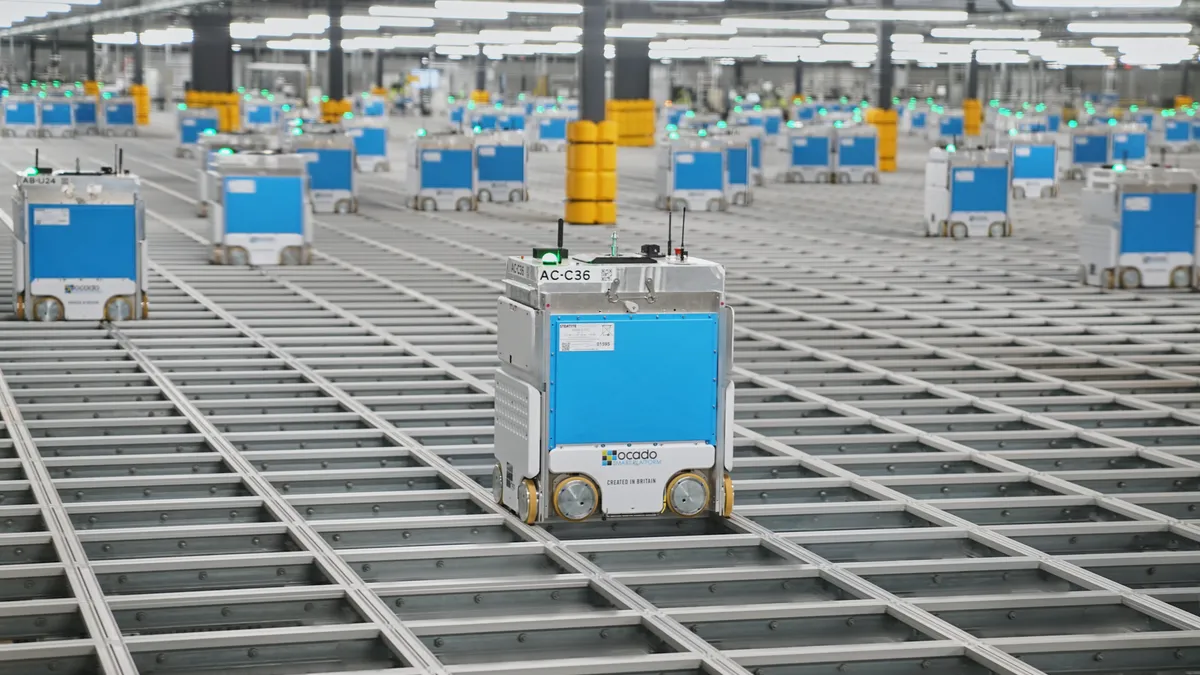Dive Brief:
-
According to a new report from Valassis, just 7% of all consumers order online groceries each week. However, the percentage goes up to 14% for parents, 12% for millennials and 15% for millennial parents. Picking online-ordered groceries up at the store was the favored option, with 8% of all shoppers doing so, and 17% of parents, 14% of millennials and 20% of millennials with children choosing that method.
-
The research and media company's report also found that 10% of parents and 14% of millennial parents have meal kits delivered at least weekly for convenience. In addition, 33% of consumers try to buy only (or mostly) organic and natural products in spite of the higher cost, but the percentage goes up among parents (48%) and millennials (50%).
-
"Our Coupon Intelligence Report data reinforces that the path to purchase for grocery items is no longer a static and ritual journey," Curtis Tingle, chief marketing officer for Valassis, said in a release. "From home delivery services to the growing presence of organic items, emerging channels and trends are changing the way shoppers buy and, in turn, how brands reach and activate their target audiences."
Dive Insight:
Of the 1,000 adults who completed the company's online survey, 73% said they were in-store shoppers and 18% were online shoppers.
Generally speaking, more parents, millennials and millennials with children were likely to buy groceries online and pick them up at the store, order groceries from a local retailer and have them delivered and order meal kits than were the overall group of adult respondents. This isn't surprising since those three categories of consumers are the most likely to be busy and looking for the most convenient way to acquire and prepare food items.
Retailers could benefit by providing coupons and other discounts on frequently purchased items to these demographic groups, the report suggests. Responding with practical solutions to consumers' needs helps build a relationship and makes it more likely they will continue to patronize that particular store.
As Tingle put it: "Consumers are increasingly looking for convenience and unique shopping experiences, as well as deals and coupons. Brands and retailers that offer these dimensions of value on a consistent basis across a multitude of channels will ultimately see the greatest [return on investment].”
As a case in point, Costco has had success by offering more e-commerce options and free two-day delivery on orders of more than $75 of non-perishable items — plus the retail chain has joined with Instacart to provide home delivery of perishable grocery items.
Retailers might also take note of the preference for organic and natural products, particularly among millennials and parents. To draw these groups, it makes sense to highlight interesting organic produce and keep the displays fresh and intriguing. Samples are a nice touch, as are recipes for using fruits and vegetables. Also, prepared foods, fresh-cut produce and salad kits are handy shortcuts for busy parents, approaches that regional grocers Wegmans and Publix have used to their advantage.
Retailers need to stay flexible since shoppers are liable to spread their trips out over several days rather than focus on a particular day of the week, the report found. As a result, it's important for manufacturers and retailers to regularly stay in communication with consumers so that when they're ready to make a purchase, chances are they will think of that particular brand or store.
With today's consumers shopping in many different ways — by phone, online, in-store and through meal kits — retailers increasingly have to respond by better understanding how people shop, what they tend to purchase and when, and take steps to make the experience as easy as possible.





